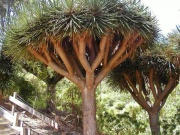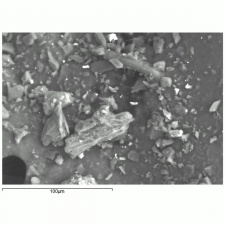Difference between revisions of "Dragon's blood"
m (Text replace - "== Authority ==" to "== Sources Checked for Data in Record ==") |
|||
| Line 46: | Line 46: | ||
* ''Dictionary of Building Preservation'', Ward Bucher, ed., John Wiley & Sons, Inc., New York City, 1996 | * ''Dictionary of Building Preservation'', Ward Bucher, ed., John Wiley & Sons, Inc., New York City, 1996 | ||
| − | * ''Encyclopedia Britannica'', http://www.britannica.com Comment: "dragon's blood." | + | * ''Encyclopedia Britannica'', http://www.britannica.com Comment: "dragon's blood." accessed 7 Apr. 2005 . |
* ''The Dictionary of Art'', Grove's Dictionaries Inc., New York, 1996 Comment: "Pigments" | * ''The Dictionary of Art'', Grove's Dictionaries Inc., New York, 1996 Comment: "Pigments" | ||
Revision as of 12:33, 12 June 2020
Description
A transparent, red, resinous exudation from the fruit of several types of palms found in southeast Asia (Calamus draco, Daemonorops draco, Daemonorops propinquus, Dracaena draco and Dracaena cinnabari) and South America (Pterocarpus draco). Dragon's blood is available as red sticks, cakes, or as a powder. The primary red coloring component is dracorubin. It evolves benzoic acid when heated. Dragon's blood was traded as early as Roman times. It was used as a red colorant in medieval manuscript illuminations. Dragon's blood has been used to stain varnishes for violins and as a colorant for Plaster, Marble, and paints. The resin has also been used as a resist in photoengraving to protect Zinc plates from Acid. The red color is fugitive when exposed to light and air, but may be partially protected by a resin film layer.
Synonyms and Related Terms
Daemonorops draco; Daemonorops propinquus; Dracaena cinnabari; Dracaena draco (dragon tree); Natural Red 31; CI 75200 (Draccorubin); CI 75210 (Dracorhodin); sangre de drago (Esp.); Drachenblut (Deut.); sang-dragon (Fr.); aima toy drakoy (Gr.); sangue di drago (It.); drakenbloed (Ned.); sangue de dragão (Port.); cinnabaris (Pliny); dragon blood (sp); dragons blood (sp); dragonsblood (sp); Calamus draco
Other Properties
Soluble in ethanol, ethers, and oils. Insoluble in water, mineral spirits and turpentine.
| Melting Point | 120 |
|---|
Additional Images
Sources Checked for Data in Record
- R. J. Gettens, G.L. Stout, Painting Materials, A Short Encyclopaedia, Dover Publications, New York, 1966
- Ralph Mayer, A Dictionary of Art Terms and Techniques, Harper and Row Publishers, New York, 1969 (also 1945 printing)
- Hermann Kuhn, Conservation and Restoration of Works of Art and Antiquities, Butterworths, London, 1986
- R.D. Harley, Artists' Pigments c. 1600-1835, Butterworth Scientific, London, 1982
- Dictionary of Building Preservation, Ward Bucher, ed., John Wiley & Sons, Inc., New York City, 1996
- Encyclopedia Britannica, http://www.britannica.com Comment: "dragon's blood." accessed 7 Apr. 2005 .
- The Dictionary of Art, Grove's Dictionaries Inc., New York, 1996 Comment: "Pigments"
- Wikipedia, the free encyclopedia, at http://www.wikipedia.com Comment: http://en.wikipedia.org/wiki/Dragon%27s_blood (Accessed Jan. 25, 2006)
- Website address 1 Comment: "Violin Varnish Glossary" at www.violins.on.ca/luthier.vargloss.html
- Website address 2 Comment: www.fw.vt.edu/dendro/dendrology/main.htm (accessed Oct. 3, 2005)
- Art and Architecture Thesaurus Online, http://www.getty.edu/research/tools/vocabulary/aat/, J. Paul Getty Trust, Los Angeles, 2000 Comment: lists 'cinnaharis' as synonym





